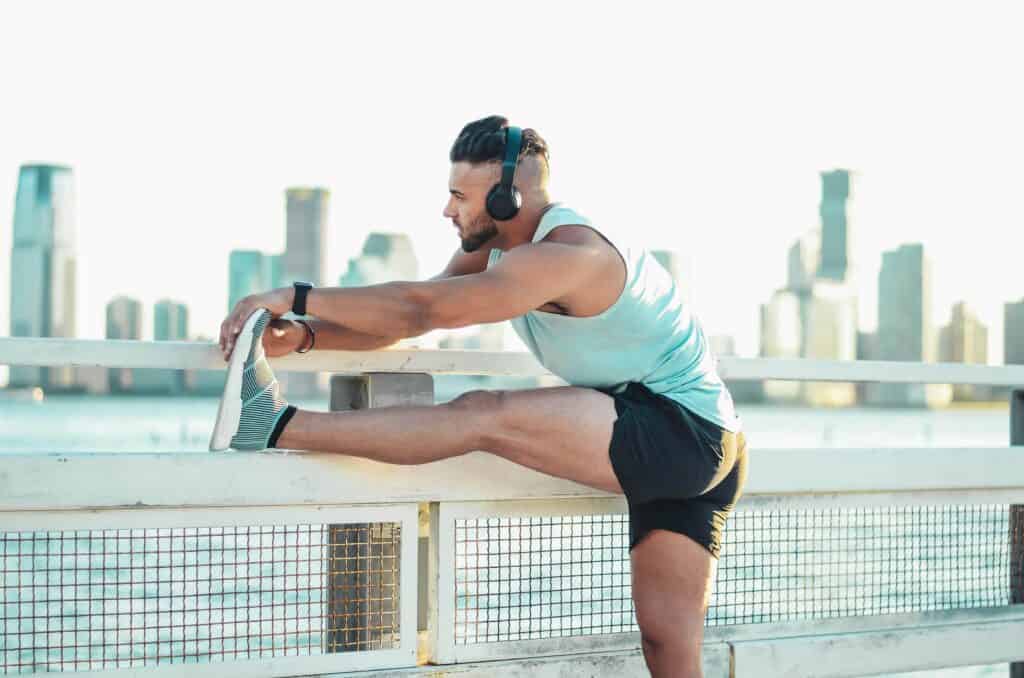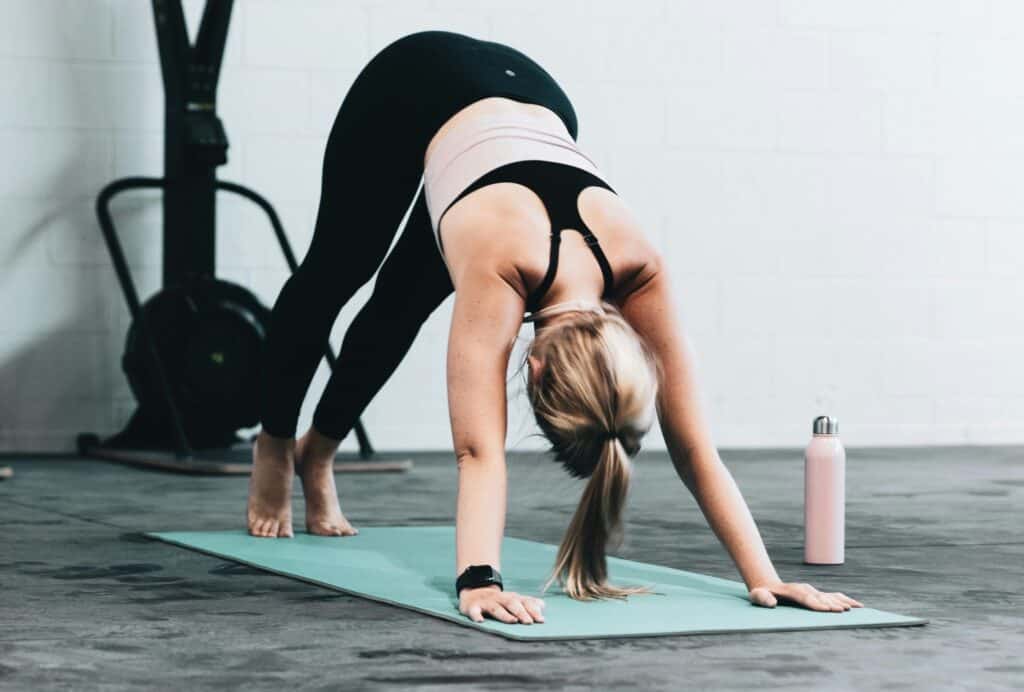
“Don’t stretch before workouts, your muscles become too supple”
“Stretch before your workouts, warming up is important”
It’s conflicting advice like this that drives people crazy, often leading to a nihilistic ‘I give up’ mentality. Most fitness topics are nuanced, and rarely have a straight answer. At the same time, replying with it depends to every question isn’t helpful to anyone either.
We all know the person who spends a half hour stretching in the gym’s studio before starting their workout. We also know the guy who walks in and throws two plates on the bench press immediately upon entering.
Both of these people may have success. But “it works for me bro” doesn’t explain what the science and research says is the best protocol overall.
Static Stretching’s Impact on Lifting
When people hear the word stretch, they likely think of static stretching. Static stretching basically means holding the position, like reaching down to touch your toes.
Static stretching is considered bad for lifting because of the stretch/relaxation phenomenon. This causes muscle to lose its recoil.
When squatting, have you ever noticed that your body wants to naturally ‘pop back up’ when you’re in the bottom position? That is the recoil we’re talking about.
Imagine if you stretched a rubber band for a split second. The rubber band would snap hard and fast. But if you held that rubber band in a stretched position for an hour, it would lose its elasticity and look withered like a soggy French fry.

With that said, static stretching for 10 seconds or less seems to have no negative effect on workout performance. However, studies show that static stretching from 30-135 seconds did have a negative effect on performance [1].
There seems to be a dose-respondent effect, meaning that the more you stretch the more your performance is impacted.
Practically speaking, I don’t know anyone stretching for 135 seconds per position before a workout. However, if you were to take a yoga class before a workout, the cumulative effect of all the stretches would likely impair performance.
Dynamic stretching
Dynamic stretching is different from static stretching. Dynamic stretching is reaching the fully stretched position but not holding it.
Examples include walking, where on each step you hold your knee to your chest for a split second. Think of the sort of things you would see football players line up and do before practice. These are dynamic stretches.
Even something like arm circles, where you don’t reach a fully stretched position, can be considered a dynamic stretch.
Dynamic stretching has a minimal, but positive effect on lifting performance.
With that said don’t go crazy with it and let it eat it into your actual workout.
What is the best way to warm up?
I’ve always felt that the best way to get better at something is to do that thing. Many strength and conditioning professionals try to apply protocols to their athletes that require some roundabout explanation as to why this is supposed to work.
For example, I never understood why boxers spend hours on road work (i.e. running long distances) when that time could be spent in the ring or hitting pads. These are things more congruent with the sport itself.
With lifting it’s the same. I was guilty of doing 15 minute walks on the treadmill followed by some elaborate warm up before my workouts.
Now I simply do extra warm up sets of the exercise before getting into my actual working sets. However, it’s important not to burn yourself out on these warm up sets.
You should pick a light weight and do about four to six reps. It will feel easy and it’s supposed to feel easy. You don’t want to make the mistake of taking away anything from your working sets. These are the crucial sets that stimulate your muscles for growth.
I may also do some very light stretching as well. Quite frankly, it feels good and as mentioned does not impair performance if kept brief. My go-to is usually just hanging from a pull-up bar, changing my grip each time.
On a leg day I may do some dynamic hurdling stretches to loosen up my hips and simultaneously reflect back on my underwhelming high school track career.
If you do either brief static stretching or dynamic stretching, be sure to limit the time spent. Don’t lose sight of the most important part of the workout… the workout.
References
- Chaabene H, Behm DG, Negra Y, Granacher U. Acute Effects of Static Stretching on Muscle Strength and Power: An Attempt to Clarify Previous Caveats. Front Physiol. 2019 Nov 29;10:1468. doi: 10.3389/fphys.2019.01468. PMID: 31849713; PMCID: PMC6895680.
